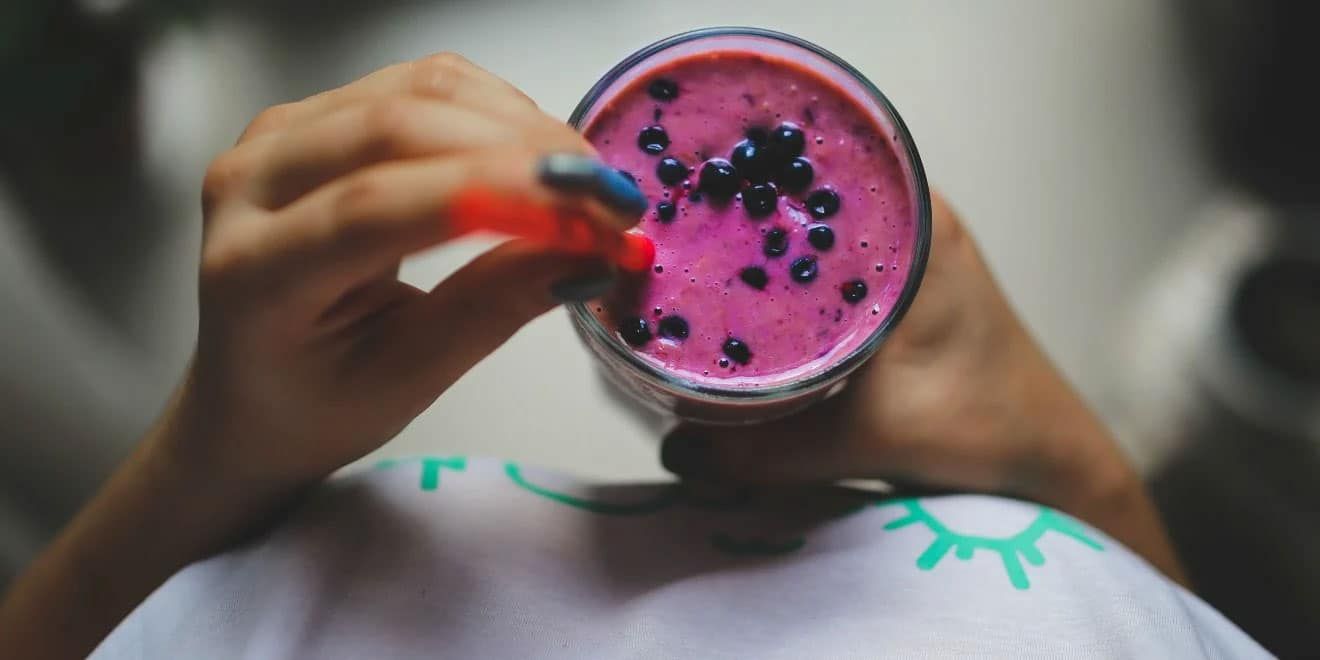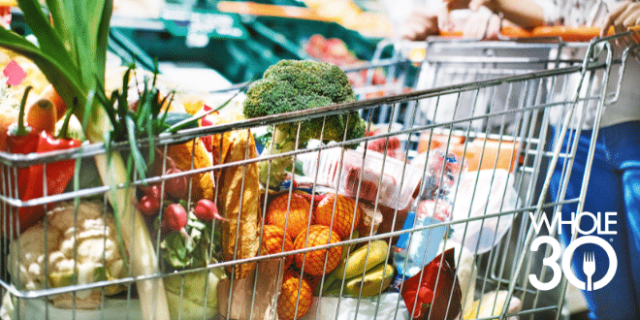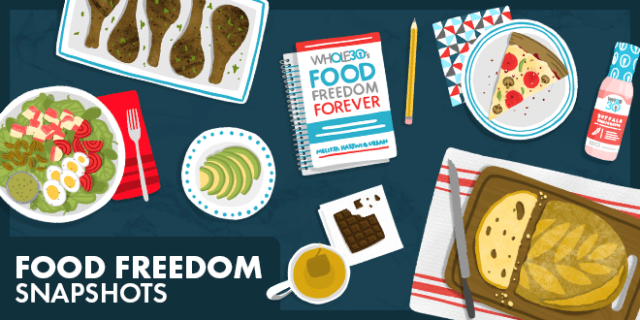Smoothies can be a convenient source of calories and nutrients on the Original Whole30. But not all smoothies are created equal. See this Registered Dietitian’s plan for creating a health-promoting, nutrient-dense smoothie on the Whole30.
By Stephanie Greunke, Registered Dietitian
Smoothies and the Whole30
In general, we prioritize eating real food on the Whole30. For one, the satiety factor of meals you chew and swallow is higher than meals you drink. Eating whole food, especially at breakfast, helps you feel fuller longer, and keeps you better in touch with your body’s natural “hungry” and “full” cues. In addition, smoothies can promote hunger, cravings, and blood sugar dysregulation when they’re loaded with fruit and light on healthy fats and protein.
However, there is a place for nutrient-dense smoothies in your Original Whole30. You may require extra calories and nutrition if you’re pregnant, nursing, an athlete, or working a physically demanding job. In that case, a between-meal smoothie can provide a quick and easy source of protein and calories. In addition, if you’re regularly on the go or have an unpredictable meal schedule, you may find the occasional portable meal in the form of a smoothie helpful.
We still want your Whole30 smoothie to be satiating, nutritionally balanced, and suit your health context and goals. Here are our best tips for making a nutrient-dense smoothie for your Original Whole30.
How to build your smoothie
Most smoothies use a variety of fruit and fruit juice as their main component, with just a sprinkling of veggies, a light non-dairy milk, and little to no protein. However, this recipe could easily provide too much fast-digesting sugar for your health goals or context. Fruit-heavy smoothies can result in unstable energy, mood, and cravings throughout the day, especially for those with less-than-optimal blood sugar regulation.
The Whole30 smoothie template looks more like a mini-meal, using the guidelines found in our Meal Planning Template. Ideally, your smoothie contains a portion of protein, some fruit, even more veggies, and a portion or two of healthy fats. The added protein and fat help to modulate your blood sugar response, and adding vegetables helps to boost the smoothie’s nutritional value.
Creating your Original Whole30 Smoothie
Here are some mix-and-match options for creating your own low-sugar, nutrient-dense, protein-rich smoothie. We’ve given you suggestions for amounts in each category, but feel free to adjust until you find the balance right for your hunger levels, context, and goals.
Base Liquid (1-1.5 cups):
- Unsweetened Whole30-compatible dairy-free milk
- Canned coconut milk
- Brewed unsweetened tea
- Whole30 compatible bone broth
- Water/ice
Bone broth in a smoothie? Yes! We recommend using chicken broth (not beef) for a lighter flavor.
Protein (1 serving, 15-20 grams):
- Whole30 compatible collagen peptides
- 100% unsweetened egg white protein powder
- 100% unsweetened pea protein powder
- Cooked egg whites
Not into protein powder or collagen peptides? You could also pair your nutrient-dense smoothie with a “side” of easy protein like hard-boiled eggs, deli turkey, chicken sausage, or two meat sticks.
Fat (1-2 servings):
- Avocado
- Seeds (chia, hemp, pumpkin, ground flaxseed, etc.)
- Unsweetened nut or seed butter (almond butter, sunflower seed butter, etc.)
- Unsweetened coconut butter
- Unsweetened coconut flakes
Using coconut milk in a can acts as a liquid base and adds healthy fat to your smoothie. Use the full-fat version, not the “light.”
Fruit (1 cup, max):
- Berries (strawberries, blueberries, raspberries, blackberries)
- Apple, pear, peach
- Pineapple, mango (1/2 cup max)
- Banana
Frozen fruits help keep your smoothie cold and can add a creamier, thicker texture. (Especially banana! Pop a whole banana in the freezer for an hour before blending.)
Veggie (1 cup, minimum):
- Leafy greens (spinach, kale)
- Mashed pumpkin
- Mashed sweet potato
- Cauliflower rice
- Zucchini
Boosts (Optional, to taste):
- Cinnamon
- Chai seasoning, unsweetened
- Turmeric
- 100% cacao
- Sea salt
- Fresh herbs (mint, basil)
Recipes from our Community
Need more inspiration? Here are a few Original Whole30 smoothie recipes from our community.
Good Morning, Get Moving Smoothie (From Lindsay R.)
serves 2-3
1 banana (or 2 c. frozen mixed berries)
2 heaping handfuls of spinach
1 Tbsp chia seeds
1 Tbsp unsweetened shredded coconut
1.5 Tbsp ground flaxseed
2 cups unsweetened almond milk
2 scoops collagen peptides
(Optional: 1 cup ice cubes)
Turmeric Cinnamon Apple Smoothie (From Meghan M.)
serves 1-2
3/4 cup canned coconut milk
1/2 large apple
2 cups spinach
1 tsp cinnamon
1 tsp turmeric
1-2 scoops collagen peptides
Blueberry Chiller (From Megan D.)
serves 1-2
1 cup unsweetened nut milk
1/2 frozen banana
1/2 cup frozen blueberries
1 cup kale
2 Tbsp nut butter
2 Tbsp collagen peptides
Ice cubes (optional)
















